Health Care > STUDY GUIDE > NUR 2513 EXAM STUDY GUIDE- MATERNAL CHILD NURSING / Complete With Rationales/ Over 300 Q&A (All)
NUR 2513 EXAM STUDY GUIDE- MATERNAL CHILD NURSING / Complete With Rationales/ Over 300 Q&A
Document Content and Description Below
While the vital signs of a pregnant client in her third trimester are being assessed, the client complains of feeling faint, dizzy, and agitated. Which nursing intervention is appropriate? a. Have t... he stand up and retake her blood pressure. b. Have client the client sit down and hold her arm in a dependent position. c. Have the client turn to her left side and recheck her blood pressure in 5 minutes. d. Have the client lie supine for 5 minutes and recheck her blood pressure on both arms. Blood pressure is affected by positions during pregnancy. The supine position may cause occlusion of the vena cava and descending aorta. Turning the pregnant woman to a lateral recumbent position alleviates pressure on the blood vessels and quickly corrects supine hypotension. Pressures are significantly higher when the patient is standing. This would cause an increase in systolic and diastolic pressures. The arm should be supported at the same level of the heart. The supine position may cause occlusion of the vena cava and descending aorta, creating hypotension. 2 A pregnant client has come to the emergency department with complaints of nasal congestion and epistaxis. Which is the correct interpretation of these symptoms by the health care provider? a. Nasal stuffiness and nosebleeds are caused by a decrease in progesterone. b. These conditions are abnormal. Refer the client to an ear, nose, and throat specialist. c. Estrogen relaxes the smooth muscles in the respiratory tract, so congestion and epistaxis are within normal limits. d. Estrogen causes increased blood supply to the mucous membranes and can result in congestion and nosebleeds. As capillaries become engorged, the upper respiratory tract is affected by the subsequent edema and hyperemia, which causes these conditions, seen commonly during pregnancy. Progesterone is responsible for the heightened awareness of the need to breathe in pregnancy. Progesterone levels increase during pregnancy. The client should be reassured that these symptoms are within normal limits. No referral is needed at this time. Relaxation of the smooth muscles in the respiratory tract is affected by progesterone. 3 Which suggestion is appropriate for the pregnant client who is experiencing heartburn? a. Drink plenty of fluids at bedtime. b. Eat only three meals a day so the stomach is empty between meals. c. Drink coffee or orange juice immediately on arising in the morning. d. Use Tums or Alkamints to obtain relief, as directed by the health care provider. Antacids high in calcium (e.g., Tums, Alkamints) can provide temporary relief. Fluids overstretch the stomach and may precipitate reflux when lying down. Instruct the woman to eat five or six small meals per day rather than three full meals. Coffee and orange juice stimulate acid formation in the stomach. 4 While providing education to a primiparous client regarding the normal changes of pregnancy, what is important for the nurse to explain about Braxton Hicks contractions? a. These contractions may indicate preterm labor. b. These are contractions that never cause any discomfort. c. Braxton Hicks contractions only start during the third trimester. d. These occur throughout pregnancy, but you may not feel them until the third trimester. Throughout pregnancy, the uterus undergoes irregular contractions called Braxton Hicks contractions. During the first two trimesters, the contractions are infrequent and usually not felt by the woman until the third trimester. Braxton Hicks contractions do not indicate preterm labor. Braxton Hicks contractions can cause some discomfort, especially in the third trimester. Braxton Hicks contractions occur throughout the whole pregnancy. 5 What is the reason for vascular volume increasing by 40% to 60% during pregnancy? a. Prevents maternal and fetal dehydration b. Eliminates metabolic wastes of the mother c. Provides adequate perfusion of the placenta d. Compensates for decreased renal plasma flow The primary function of increased vascular volume is to transport oxygen and nutrients to the fetus via the placenta. Preventing maternal and fetal dehydration is not the primary reason for the increase in volume. Assisting with pulling metabolic wastes from the fetus for maternal excretion is one purpose of the increased vascular volume. Renal plasma flow increases during pregnancy. [Show More]
Last updated: 2 years ago
Preview 1 out of 142 pages

Buy this document to get the full access instantly
Instant Download Access after purchase
Buy NowInstant download
We Accept:

Reviews( 0 )
$12.00
Can't find what you want? Try our AI powered Search
Document information
Connected school, study & course
About the document
Uploaded On
Apr 29, 2022
Number of pages
142
Written in
Additional information
This document has been written for:
Uploaded
Apr 29, 2022
Downloads
0
Views
68

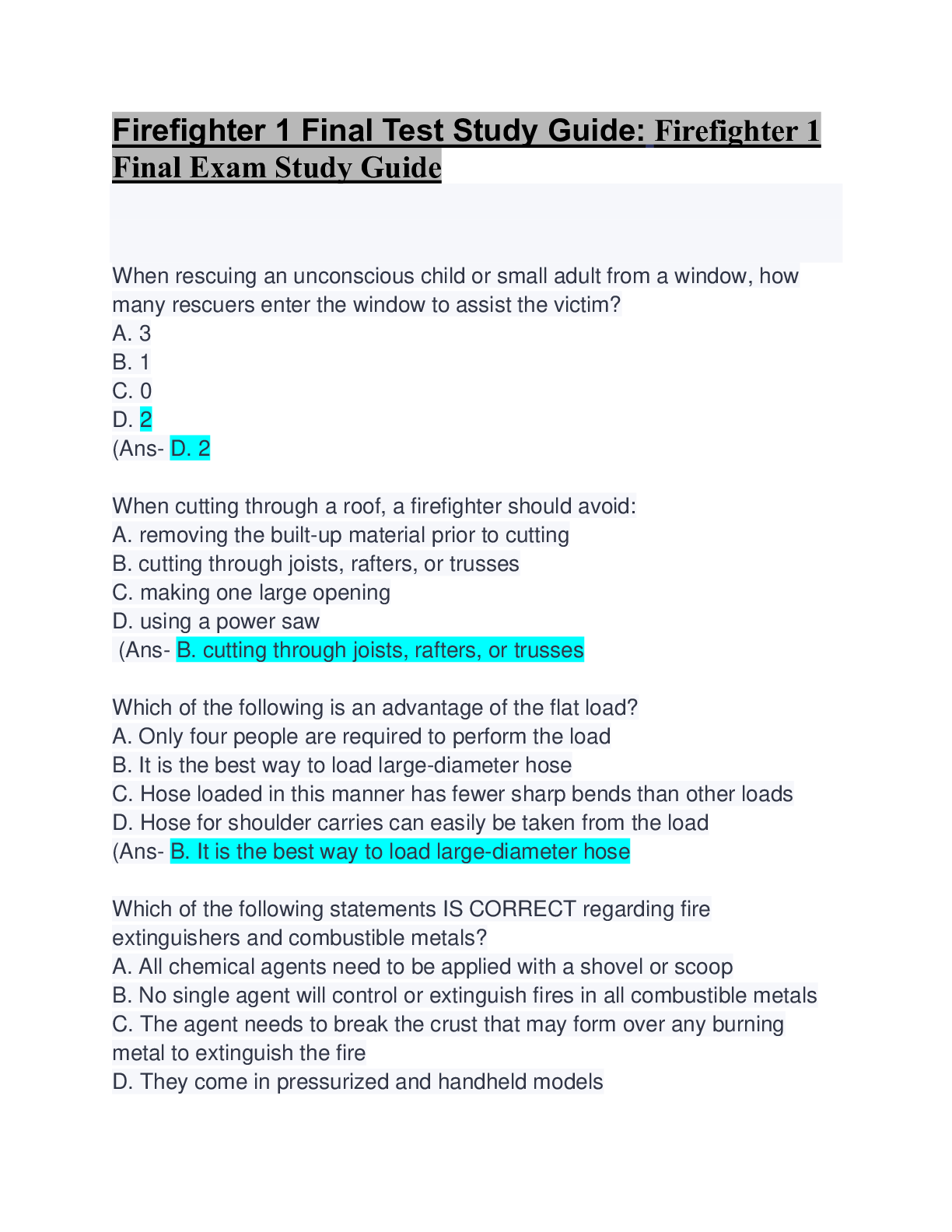

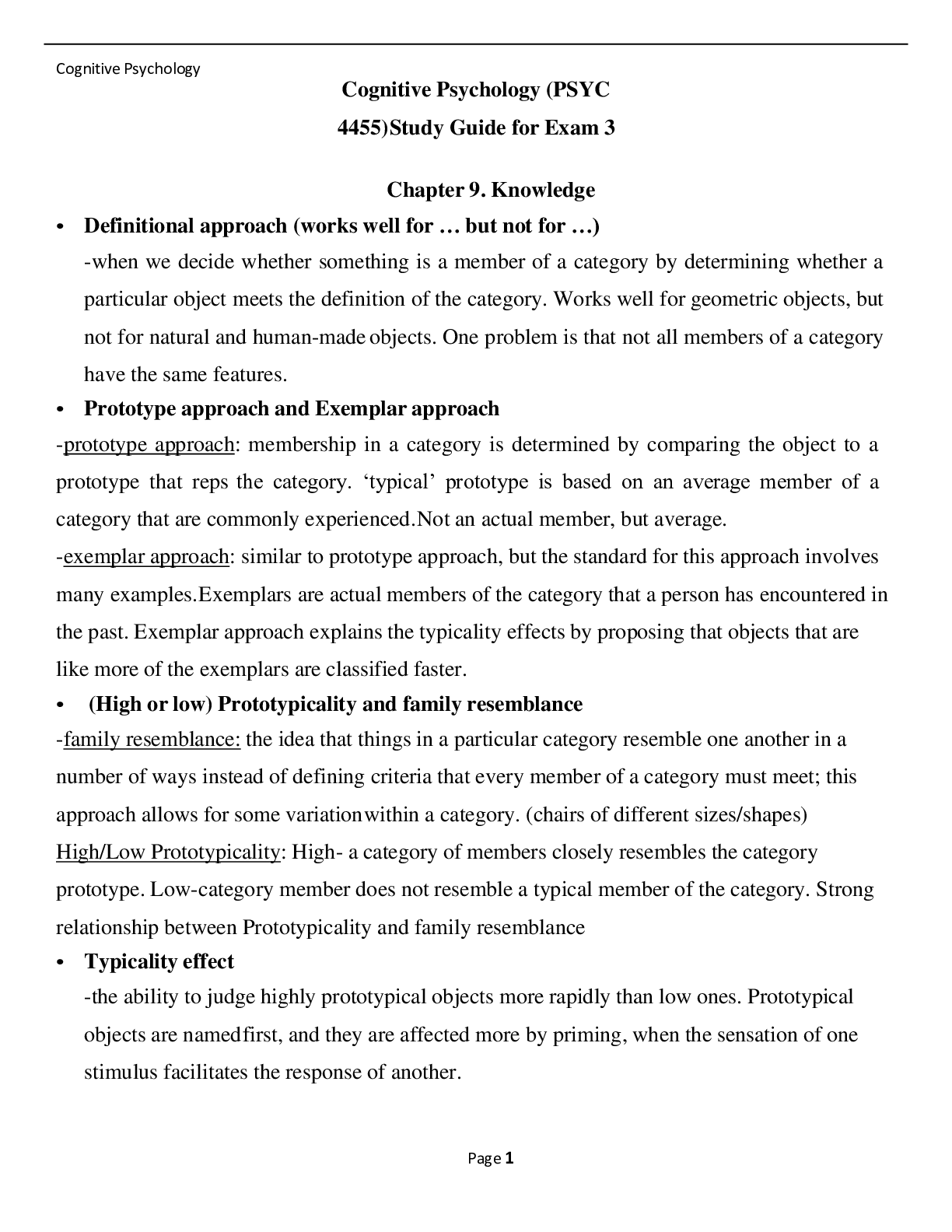


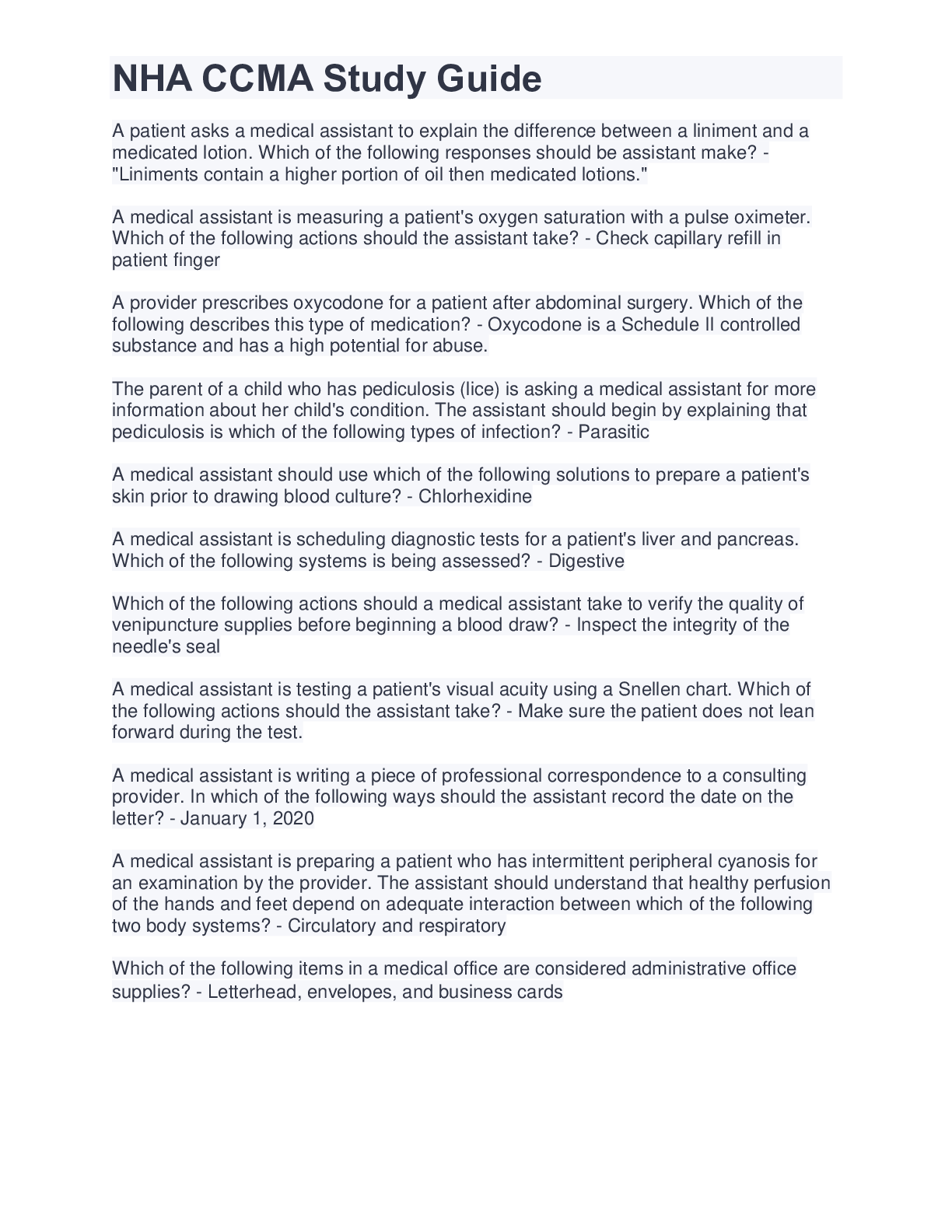


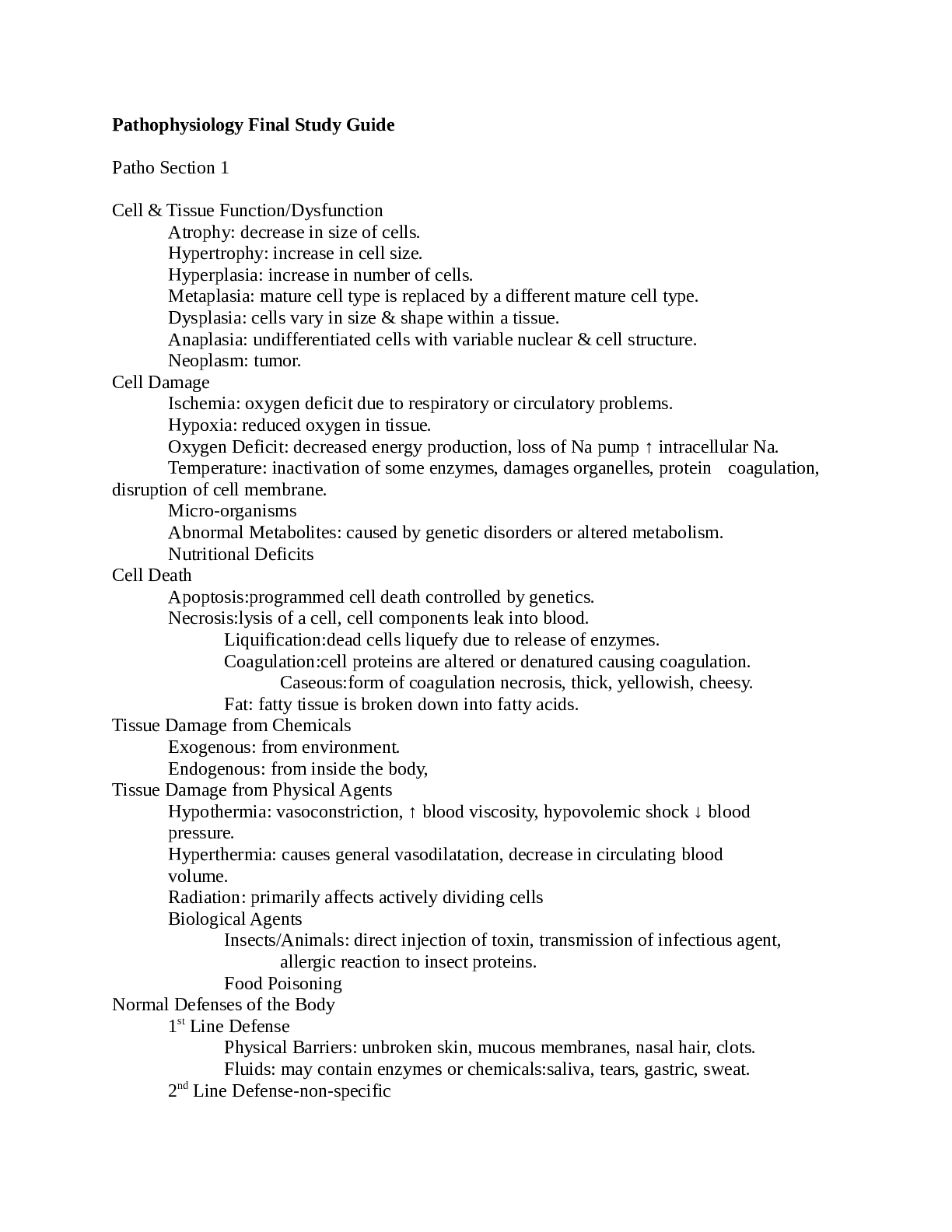

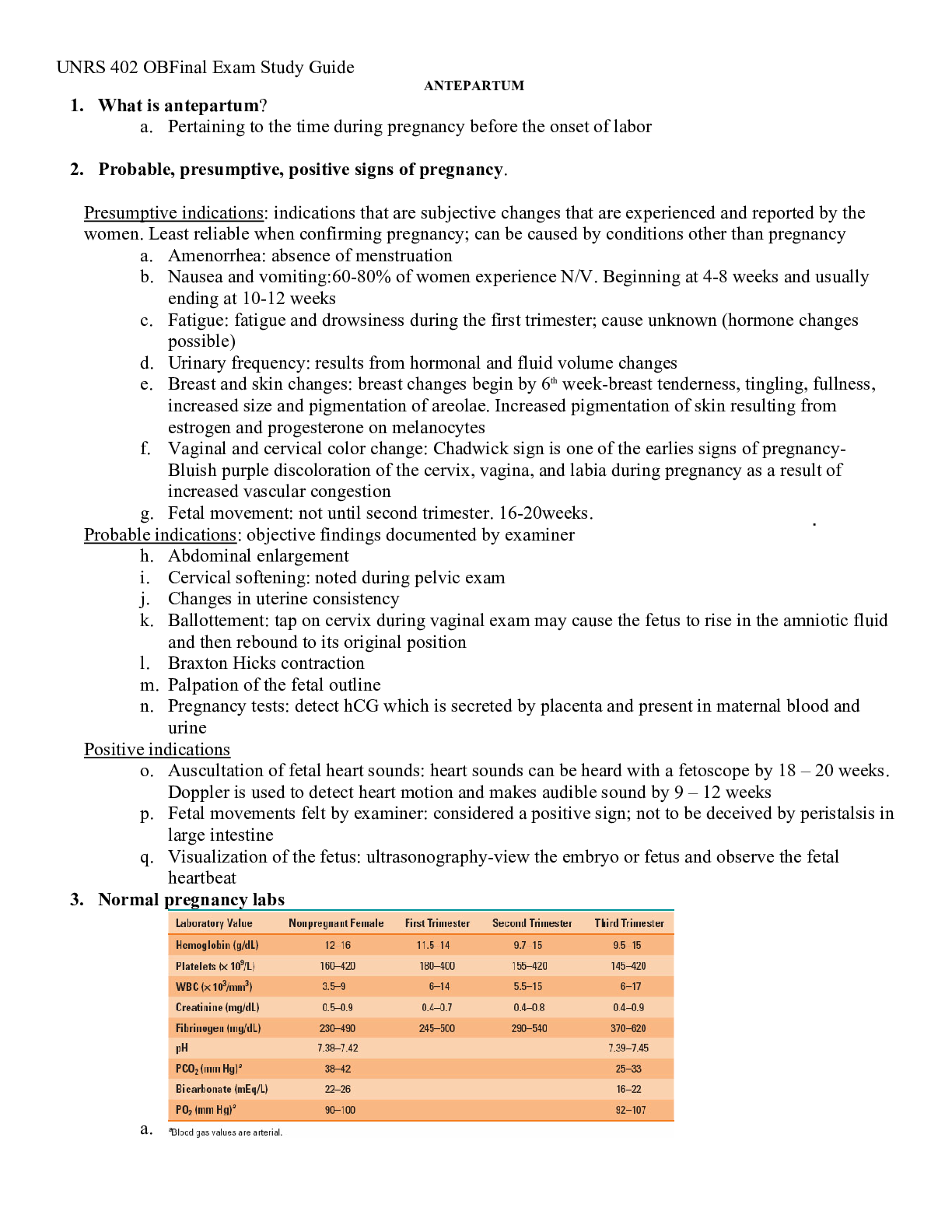






.png)







